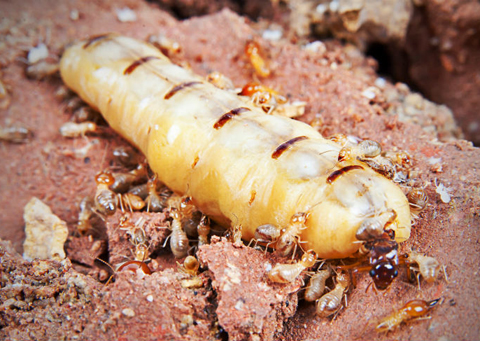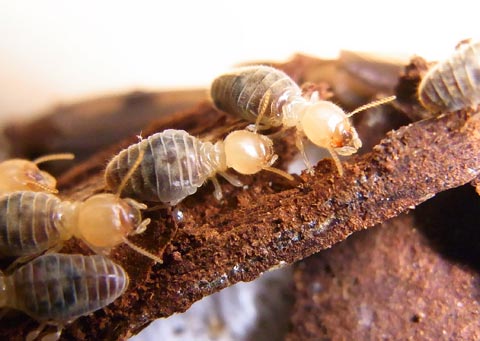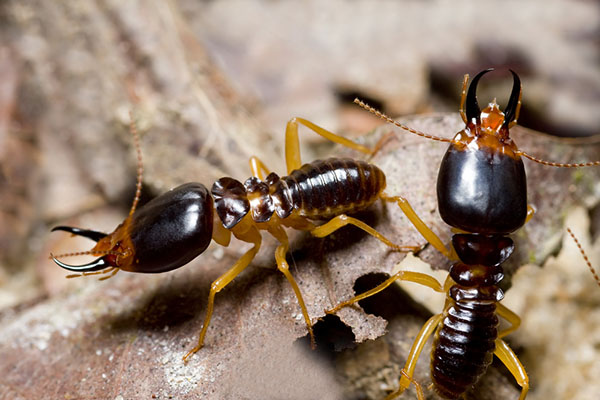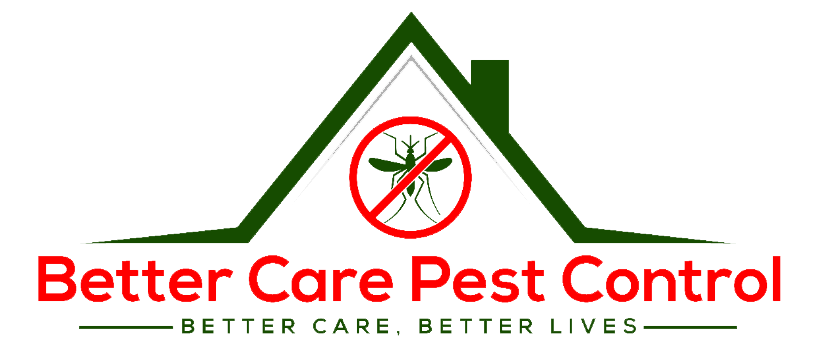TERMITES

Latin Name: Isoptera
Appearance:
Termites all belong to the phylum Arthropoda, the class Insecta, and the order Isoptera. There are over 2,000 different species of termites with over 40 species. Although they have distinct characteristics, most look similar. They typically measure between 1/4 and 1/2 of an inch long and have soft bodies with straight antennae. The queens and kings are larger, capable of reaching over one inch long. Colors range from white to light brown where worker termites often appear lighter, while swarming termites darker. Flying termites, also called reproductive, have two pairs of prominent wings.
Termites (also known as ‘white ants’) thrive and grow very well in tropical climate with high humidity and rainfall. There are two main species of termites capable of causing extensive damage, leading to costly repairs and structural failure.
Types of Termite
- Subterranean Termite
- Drywood Termite
- Dampwood Termite

Subterranean Termite

Drywood Termite

Dampwood Termite
Termites come from the following:
- Underground soil
- Infested wooden furniture
- Via mud tubes
- Flying alates
Termite Society
The basic castes in a colony are queens, kings, workers, soldiers and alates.
Termite Queen & King

Giving life to the colony
The function of the Queen and King in the termite colony is to reproduce. Starting out life as an Alate, they leave their parents’ colony, drop to the ground and shed their wings to seek out an environment to nest. They care for their young until they are able to take over the duties of the colony.
Termite Workers

The ‘doers’
The workers make up the largest number within a colony. They do all of the work (except defend and reproduce): feeding, grooming, excavating the nest and making tunnels. In doing their jobs, they cause the destruction that effects so many homes.
Termite Soldiers

The colony’s defence
Soldiers defend the colony against attack by predatory enemies such as ants, and are equipped with large jaws, sticky fluids or chemical spray to do so.
Alates

The future Queens & Kings
Alates are the winged reproductives that swarm out from the nest and establish new colonies. Male and females pair off and look for a suitable environment to mate. They are often confused with ant swarmers.
Behavior, Diet & Habits
Where do they live?
Commonly, termites live in wooden structures, decayed trees, fallen timber, and soil. Habitats vary among species as some termites require different amounts of moisture. The pests are found in greater numbers in tropical regions where living conditions for termites is optimal.
Subterranean termites are the most abundant variety and can be found throughout the United States. Both dampwood and drywood species are generally more localized in the Southern states.
Subterranean termite homes are usually formed in soil. Within these mounds, termites build elaborate tunnel systems and mud tunnels through which they access above-ground food sources.
Drywood termites live within the wood they consume and oftentimes infest walls and furniture.
When a colony has matured, winged, swarming termites can be seen around windows and doors. Winged termites are highly attracted to sources of light and are most active in springtime. After mating, these termites locate a new breeding site and create another colony, spreading infestations throughout multiple locations in the case of drywood termites.
What Do They Eat?
Termites are detritivores, or detritus feeders. They feed on dead plants and trees. Termites get nutrients from cellulose, an organic fiber found in wood and plant matter. Wood makes up the majority of the pests’ diet, although termites also eat other materials such as paper, plastic, and drywall. Most species prefer dead wood, but some termites feed on living trees.
Each type of termite has its own dietary preferences.
- Subterranean termites prefer softwoods, but may invade most species of wood.
- Dampwood termites generally stay close to the ground, but will choose moist, decaying wood anywhere it is found.
- Drywood termites are often found in attics and require little moisture in the wood they eat.
A termite’s mouth is capable of tearing pieces of woody material. This ability is what causes concern in human dwellings: while termite workers only measure approximately 1 cm to a few millimeters in length, their feeding habits are capable of causing costly damage to property. House foundations, furniture, shelves and even books are all possible feeding sites for termites.
Signs of Termites
Termite infestation is usually not apparent until severe damages have incurred. They live in dark, humid and protected environment, which make them so hard to find – until it’s too late.
As termites devour their way through wood from the inside, it can be rather challenging to detect a termite infestation but there are some tell-tale signs that indicate their presence.
Here are a few common signs of termites that you might see (or hear) around your home or business premises:
- Mud tubes on wall – Subterranean termites build shelter tubes made of mud, dirt and debris in order to travel to and fro the food source without being seen. These tubes are about the size of a coin and are usually found on exterior and interior walls leading up to the entry points of the building.
- Sightings of termite swarmers (flying termites) or discarded wings – Usually the first sign of infestation noticed by property owners are the presence of swarmers or alates. Another common indication is the remnants of discarded wings on windowsills and floors.
- Papery or hollow sounding timber – Termites usually consume woods from the inside out, leaving a thin veneer of timber or paint. So when you knock or tap on an area that has termite damages, it will sound hollow or feel papery due to parts (or all) of the timber having been eaten away.
- Tight fitting door or hard to open window – As termites devour timber, their excrement or ‘mud’ creates a protective environment that traps heat and moisture. This causes timber to swell, making it harder to open or close the infested windows and doors.
- Tunnels in the wood – Also known as ‘galleries’ which are quite difficult to see from the outside.
- Termite droppings – After consuming wood, dry wood termites often leave behind brown-coloured and grainy faecal mounds. These faecal pellets are usually found beneath the infested wood.
How do I prevent termite infestation?
Since termites are a constant threat to your home, here are some things you can do during the year to help maintain the effectiveness of Better Care’s termite treatment plan. Small steps make a big difference in termite prevention and sustaining an effective termite treatment plan. Start by eliminating moisture conditions and termite food around your home. These simple steps make your home a less attractive target, helping deter termites.
Eliminate Moisture Problems
- Repair leaking faucets, water pipes, and A/C units
- Divert water from foundation
- Keep gutters and downspouts clean
- Remove excessive plant cover and wood mulch
- Get rid of standing water on roof
- Keep all vents clear and open
- Seal entry points around water and utility lines or pipes
Remove Termite Food Sources
- Keep firewood, lumber or paper away from foundation or crawl space
- Get rid of stumps and debris near house
- Place screens on outside vents
- Check decks and wooden fences for damage
- Wood on your home shouldn’t contact the soil
How Serious Are Termites?
A termite infestation and damage can be devastating to your home or property. Termites are often called the “silent destroyer” because they may be secretly hiding and thriving in your home or yard without any immediate signs of damage. All termites consume cellulose-based plant materials. Unfortunately, all homes, regardless of their construction type, can provide cellulose food for termite infestation.
How Do I Get Rid Of Termites?
Based on the layout of your home and the degree of termite infestation, We will create a customized treatment plan tailored for your home. This can include a variety of treatments such as Dusting trearment, Foaming treatment and Baiting treatment dependent on the areas of usage, situations, and species of termite.
Contact Better Care today to get rid of your termite problem and eliminate any stress or pest concerns you have in your home or business.

